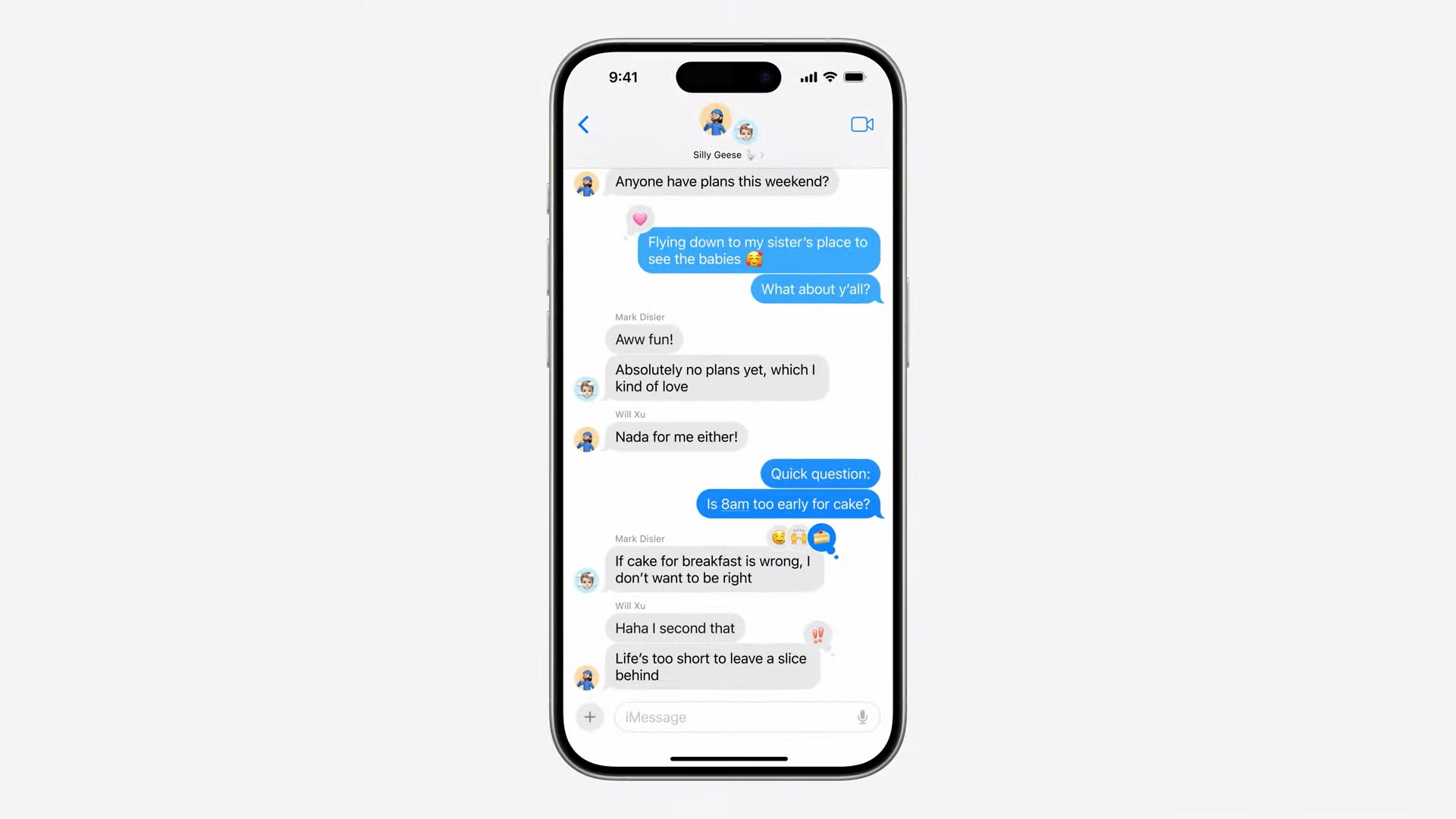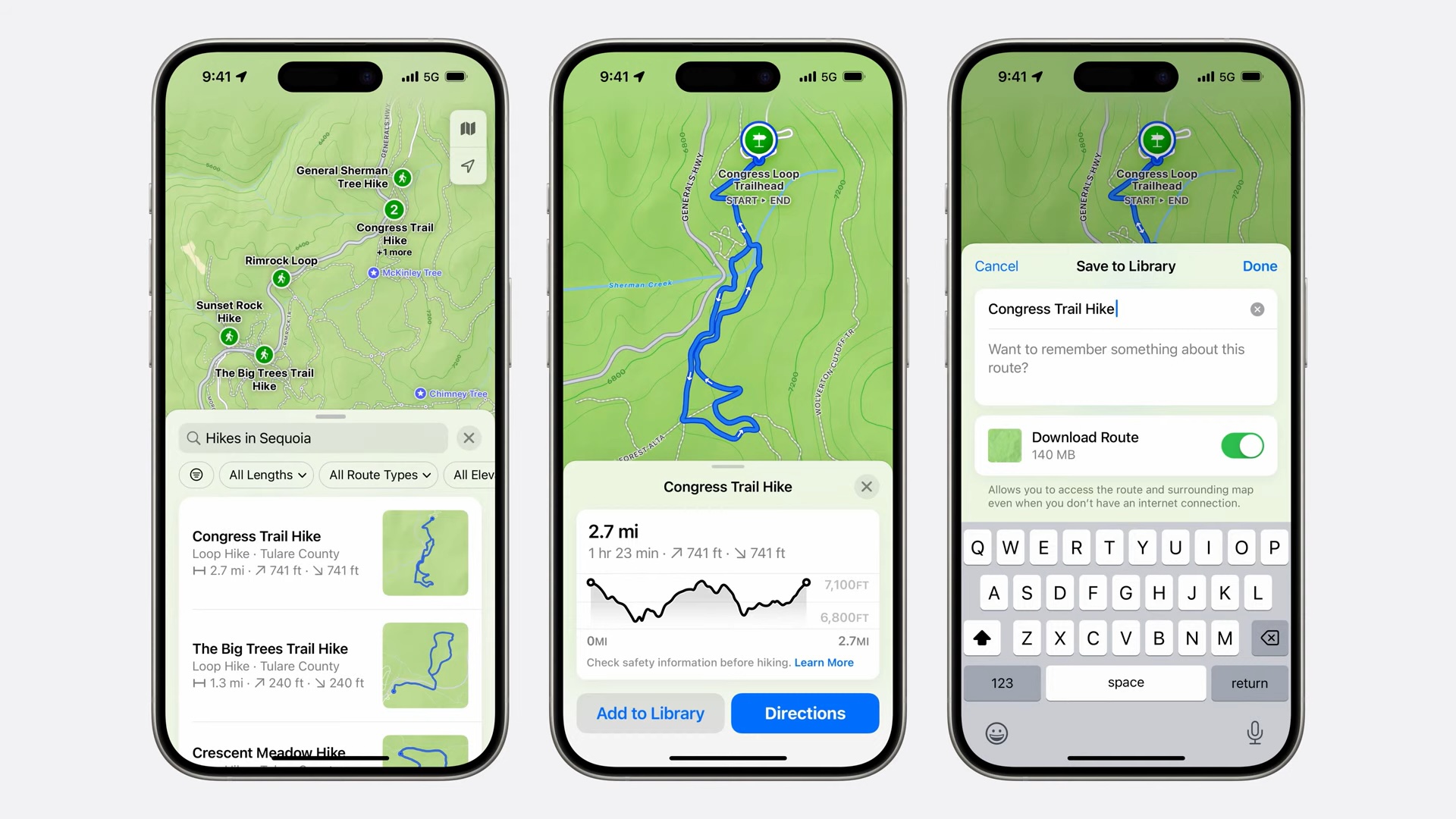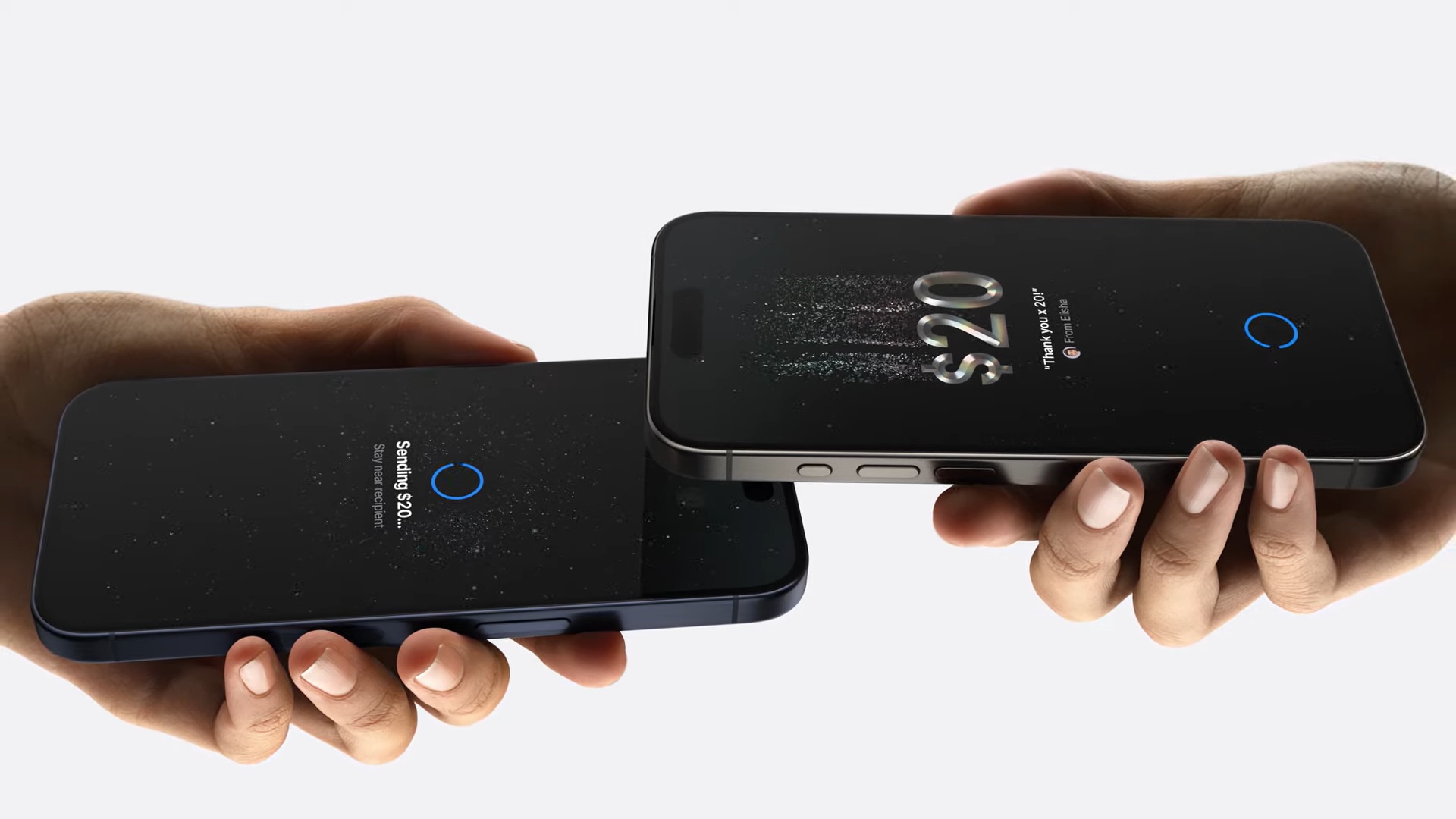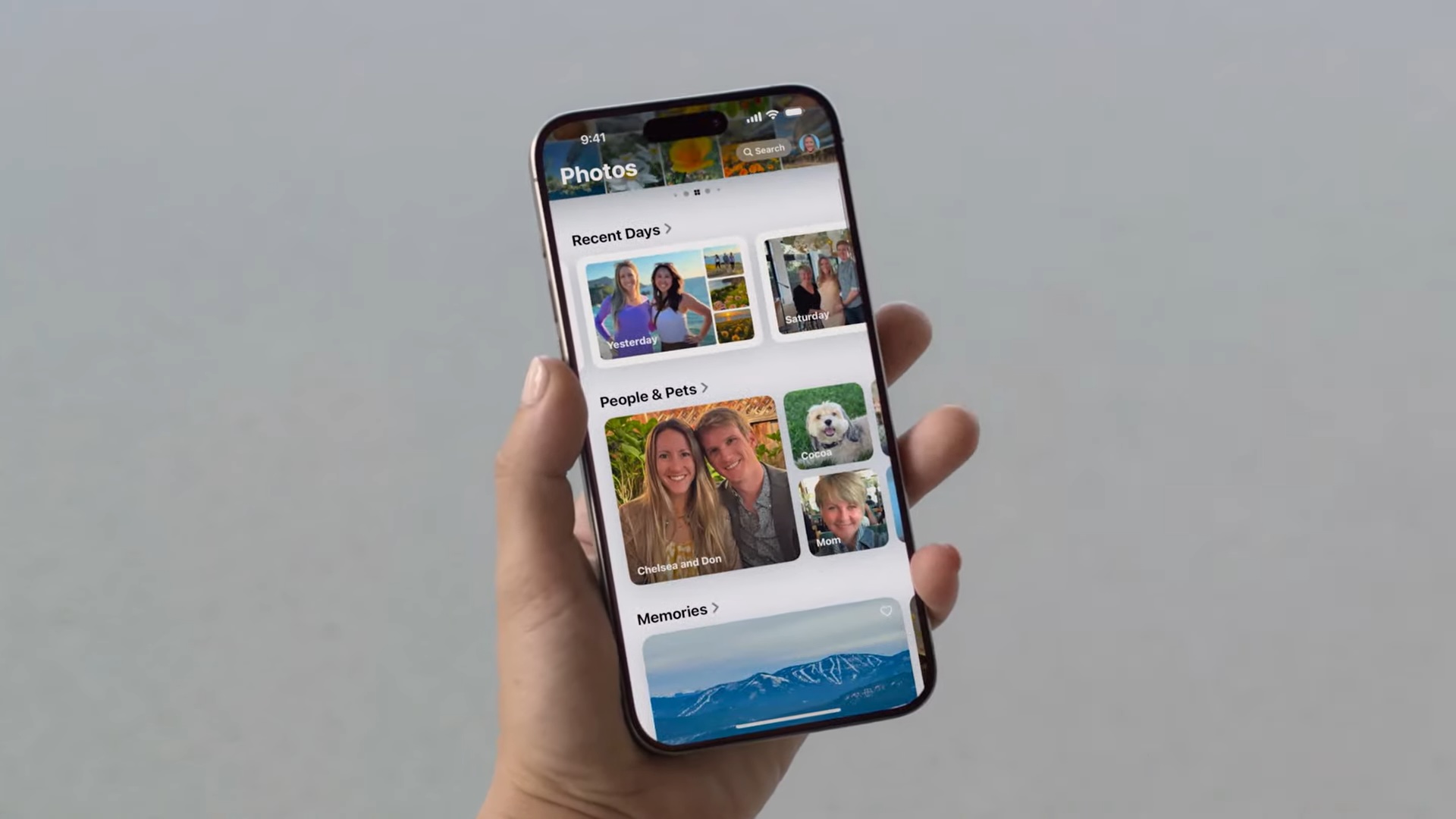As Apple gears up to launch new iPhones later in 2024 there’s another iPhone update coming to all iPhones from the iPhone XR up: iOS 18.
At the WWDC 2024 keynote on June 10, Apple unveiled the new features coming in iOS 18. Among them are a redesigned Photos app, new ways to customize your Home screen and wallpaper, new Messages reactions, privacy-related features and dozens of other smaller changes.
This free software update will bring a raft of interface tweaks, bug fixes, and new features. It’s like getting a new iPhone without paying a penny. In this article, we discuss everything you need to know about iOS 18.
The developer beta will be released on June 10 and we will discuss the latest versions of the beta and how to get your hands on that below and in separate articles. We will also explain when the final version of iOS 18 will come out, how to get it when it does, the models of iPhone that will be able to run iOS 18, and the features that will be added in the new OS.
iOS 18 release date
iOS 18 is likely to arrive in the week of Monday, September 16, 2024, although Apple is yet to confirm the release date.
In 2023 iOS 17 arrived on Monday, September 18, 2023 so we expect a similar timing for 2024.
Over the past several years, the release of the new version of iOS has been fairly consistent:
- iOS 17: Monday, September 18, 2023
- iOS 16: Monday, September 12, 2022
- iOS 15: Monday, September 20, 2021
- iOS 14: Wednesday, September 16, 2020
- iOS 13: Thursday, September 19, 2019
- iOS 12: Monday, September 17, 2018
Once the final release comes out, installing iOS 18 will be a breeze. Open the Settings app on your iPhone and go to General > Software Update; iOS will check for any available updates and guide you through the process of installing them. You simply have to follow the instructions, which we explain in our iOS updating guide. And it’s easier still if you’ve turned on Automatic Updates, which you can do from the same screen.
iOS 18 beta release date
Apple began the beta program soon after it revealed the details of iOS 18 at WWDC. The developer beta is available for anyone who wants to run the beta, but it should be noted that this early beta is very likely to be buggy, so we don’t recommend installing it on a primary device. Read: How to install the iOS beta on your iPhone.
Apple will release a public beta in July that will be a little more polished than the developer beta, but still likely to be buggy as it is pre-release software. In 2023 Apple Apple released the first public beta of iOS 17 on July 12.
The beta testing will continue even after Apple releases iOS 18 to the general public as Apple develops new features not available at launch.
If you’d like to join the beta for the next version of iOS read this: How to join Apple’s beta program and try out new software. If you want to remove the beta from your device read this: How to remove an iOS beta from your iPhone.
How to install the iOS beta
If you want to install a developer beta, you need, unsurprisingly, to be a registered Apple software developer, which has both free and paid ($99/£79) versions. Since June 2023 Apple has opened the beta to all registered developers–so everyone can get the earliest possible access to the iOS 16 beta. To sign up for an account and install the developer beta you need only follow these steps:
- Download the Apple Developer App from the App Store.
- Open the app and click on Account.
- Tap on Sign In and sign in using your usual Apple ID.
Once you are logged in you should see the beta in General > Software Update > Beta Updates. You need to be running iOS 16.5 or later for this to work. We cover this process in more detail in our How to get the iOS beta article.
Our advice is that rather than installing the developer beta you should install the public beta to avoid too many complications.
Read How to join Apple’s beta program for more advice.
iOS 18 compatibility: Which iPhones will be able to run iOS 18?
The following iPhones get support for iOS 18, the same lineup as iOS 17.
- iPhone 15, iPhone 15 Plus, Pro, Pro Max
- iPhone 14, iPhone 14 Plus, Pro, Pro Max
- iPhone 13, iPhone 13 mini, Pro, Pro Max
- iPhone 12, iPhone 12 mini, Pro, Pro Max
- iPhone 11, iPhone 11 Pro, Pro Max
- iPhone XS, iPhone XS Max
- iPhone XR
- iPhone SE (2nd gen or later)
It’s likely that some of the coolest new features will not be supported on the older phones, because they lack the hardware necessary (a powerful enough Neural Engine or GPU to run AI stuff, or enough RAM). This is typical of new iOS releases. In 2022, for example, the iPhone 8 and iPhone X missed out on a bunch of cool stuff due to their older processor.
The hardware requirements were expected to be steep for the AI-related features—iPhone 15 Pro or later.
iOS 17 did not support iPhone 8 or the iPhone X which came out in 2017 but since those phones are able to run iOS 16 though, they will continue to get support through security updates for at least another year.
Phones that are not able to run iOS 18 and iOS 17 will get security updates. Generally, Apple has provided software updates for the past two versions of iOS. See: How long does Apple support iPhones.
iOS 18: New features
There were many new features in iOS 17 including a new app called Journal, Live Voicemail, and a new way to use Stickers, among dozens of other smaller changes. Rumors suggested that iOS 18 would be “one of the biggest iOS updates — if not the biggest — in the company’s history.” It was expected that Apple would showcase some major new AI features. The hardware requirements are expected to be steep—iPhone 15 Pro or later.
Not all the new features will be available at launch. Some features, such as the new categories in Mail, will come “later this year” in a subsequent software update.
Home Page personalization
As expected there will be a more customizable Home screen in iOS 18.
Several reports claim that Apple will allow greater personalization of the Home screen, including allowing users to place icons anywhere on the grid, allowing spaces between them. Currently, icons can be reordered or put into folders, but always fill the screen from left to right and top to bottom.
This “put icons wherever you want” feature is something we’ve wanted from Apple for many years, and has been a staple of many Android phones seemingly forever.
New Home Page customizations and wallpaper manipulation are coming to iPhones. You’ll be able to arrange apps anywhere you want on the screen. There will be a new dark-mode in apps and customization sheet for tinting icons. You can even change the lock screen icons.
Privacy
iOS 18 will improve privacy. You will be able to control who can see your apps, which contacts you share with that app, and which accessories apps can connect to.
You can also control whether others can view your apps on your iPhone by locking an app so it won’t open without Face ID or a passcode. A new locked hidden apps folder is also coming with iOS 18.
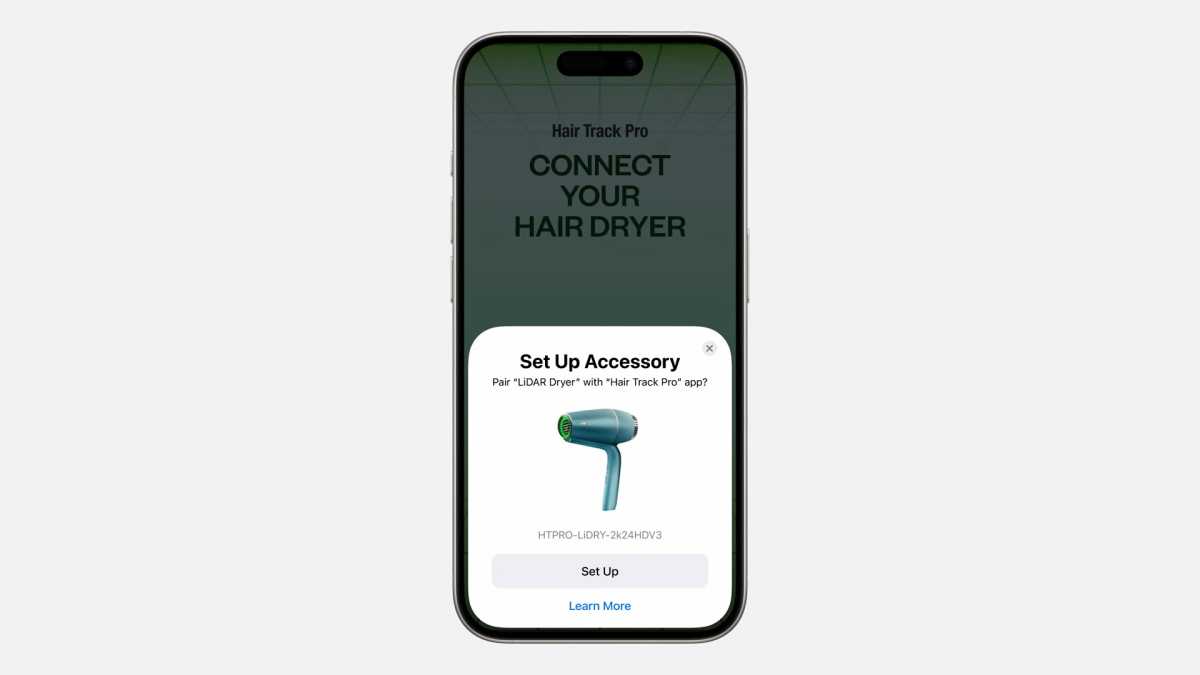
Apple
Messages
Messages will gain new ways to express yourself. Tapbacks are redesigned and will let you tap back with any emoji or sticker. You will also be able to schedule a message to send later. Expect improvements to text formatting and fun new text effects.
Apple is also making it possible to send Messages via Satellite so you can text when off the grid from Messages app. iMessages sent over satellite are encrypted.
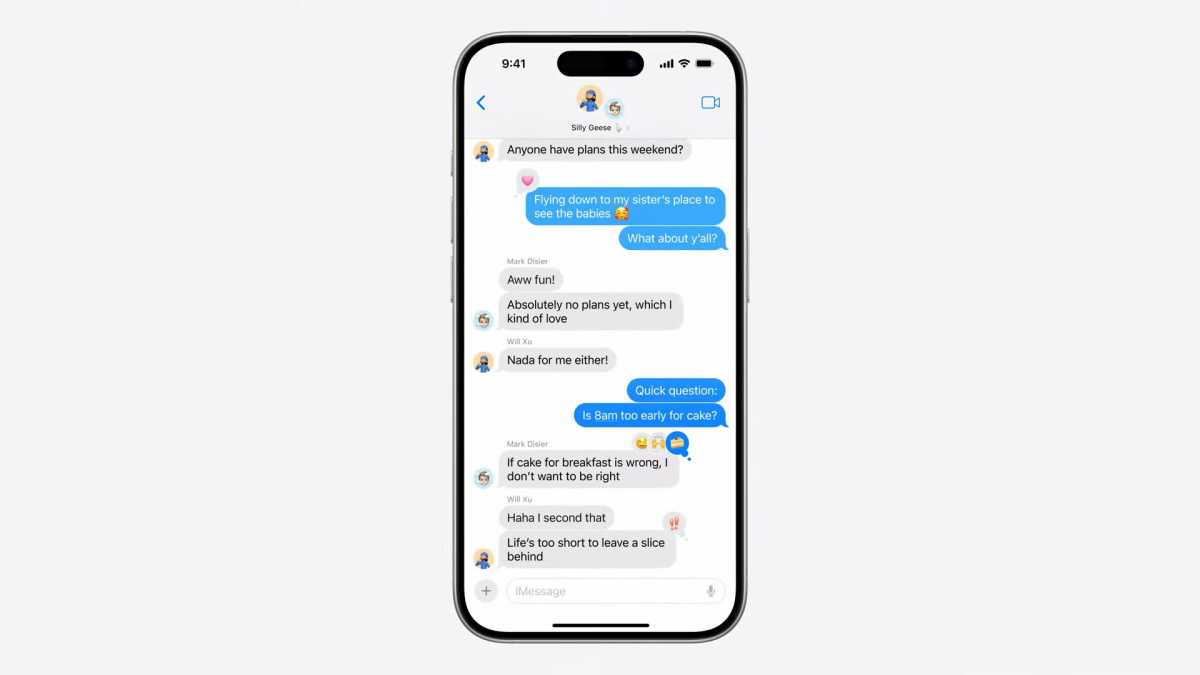
Apple
Mail will help you manage incoming email better with new Categories.
The Primary category will include people you know and time-sensitive emails. Digest will pull together all emails from a business, so for example, it could bring all flight information together.
These Categorization features will be available later this year.
Maps
New topographic maps with trails (US national parks only).
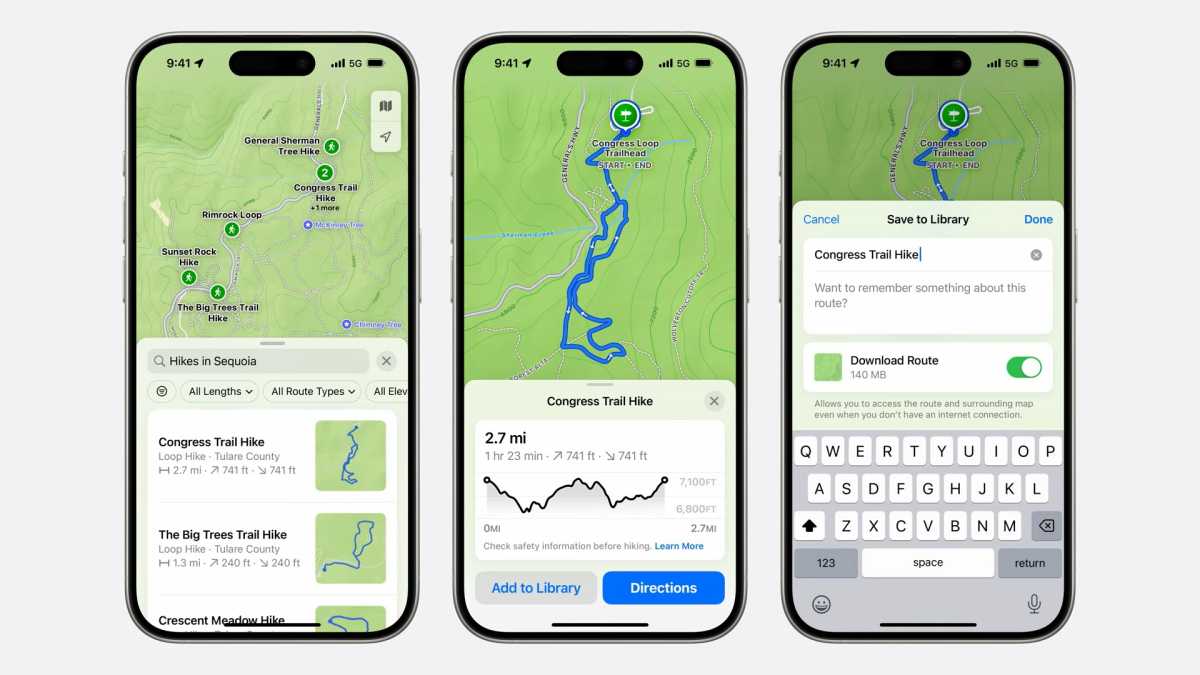
Apple
Wallet
Tap to Cash will let you share cash without exchanging email or number. There will be a new design for your event tickets including an event guide with info about the venue.
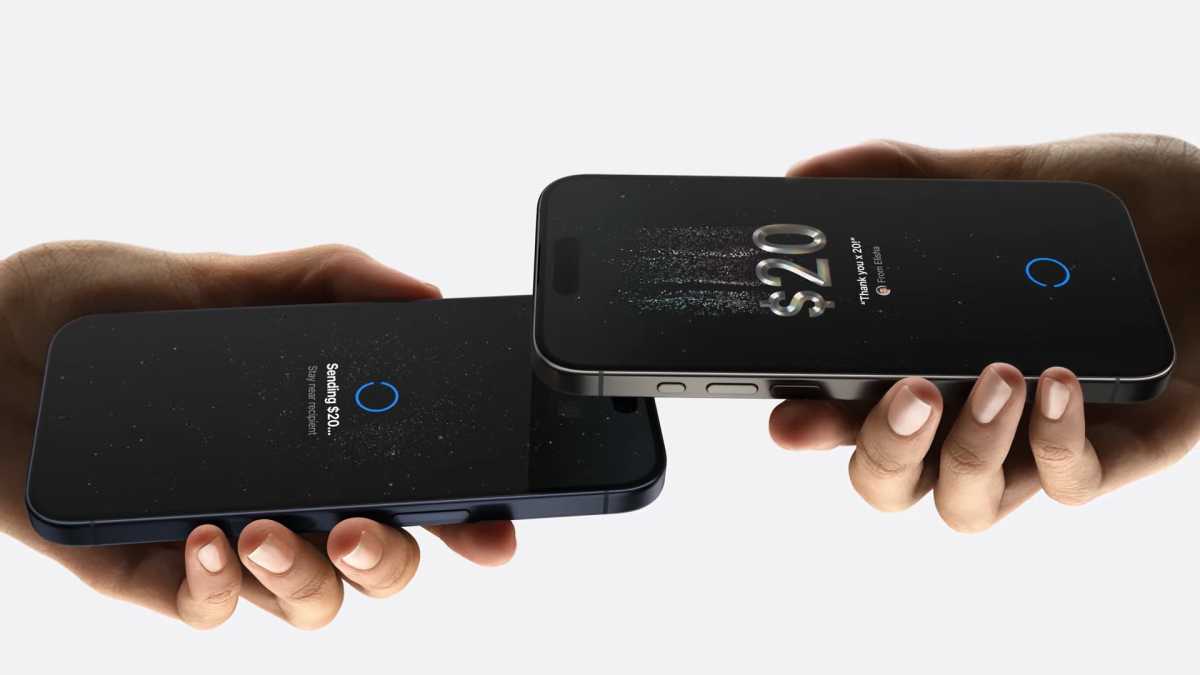
Apple
Journal
New features to help you keep track of goals, Insights view, calendar, writing streak, and actually search.
Game Mode
Game Mode is coming to iPhone. Minimizes background activity for the best frame rates.
Photos
New features in Photos will help you keep big libraries organized so you can get to the good stuff. It’s the biggest redesign of Photos ever which is intended to help users find photos fast.
You can filters out clutter to narrow down to specific types of content. Enjoy photos clutter-free. Browse by topics, time, people, memories, trips, Recent Days and People and Pets.
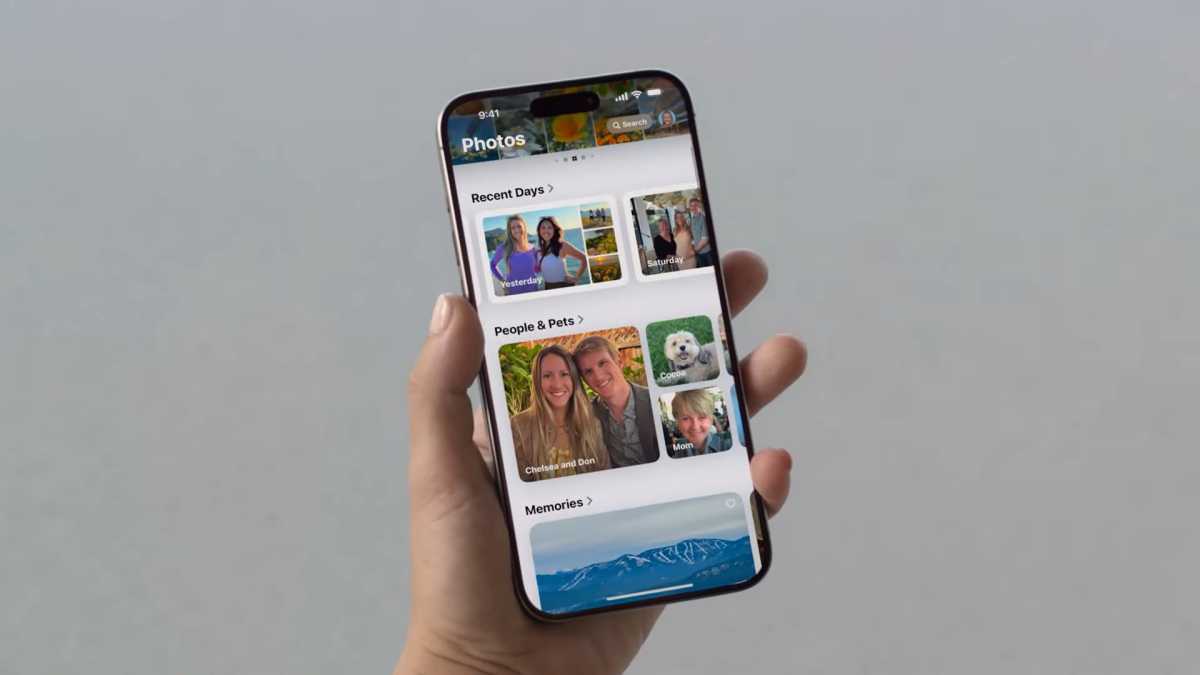
Apple
Here’s what we expected prior to the WWDC event.
Apple Intelligence
Apple Intelligence features will mostly be processed on the device, which is different from other platforms where AI processing is done in the cloud. But Apple Intelligence will be able to determine if cloud processing is needed and will use it when appropriate.
The hardware requirements are steep—iPhone 15 Pro or later. iPads will need at least an M1 chip or later. Apple Intelligence features will mostly be processed on the device, which is different from other platforms where AI processing is done in the cloud. But Apple Intelligence will be able to determine if cloud processing is needed and will use it when appropriate.
Siri
The most visible theme of iOS 18 is said to be AI. Specifically, generative AI, which Apple has been slow to bring to market while products like ChatGPT, Copilot, Gemini, Dall-E, Stable Diffusion, and others have taken the tech world by storm.
There has been a huge push inside Apple to build a generative AI technology stack, and we’ve seen Apple publish papers on a number of topics like a new large language model called Ajax, object reference called Ferret, new speech recognition models, and much more.
Siri is said to be getting a big “gen-AI” overhaul, using new large language models and other advanced AI to take it to the next level.
The new Siri is said to be more “conversational” and natural, with features that “help users in their day-to-day lives.”
A new smart responses framework will help Siri take into account your own personal details in its replies: like people, companies, calendar events, locations, dates, and more.
Later this year, Siri is said to get cross-device media control. So you can talk to Siri on one of your devices to control media playback on another.
In an update scheduled for early 2025, Siri is said to gain the ability to control nearly any app, with hundreds of possibly commands. This feature will start off with single commands for Apple’s own apps and grow to include third-party apps and commands with multiple steps.
AI everywhere
Siri’s not the only place Apple is said to be incorporating new advanced AI. We don’t have all the details yet, but Apple is said to have an edict to bring advanced AI features that it is calling “Apple Intelligence” to as many of its products as it can. Apple Music playlist generation is one oft-cited area, and so is code generation in Xcode, AI features in Pages, Numbers, and Keynote, and more.
Apple is expected to follow a hybrid approach, performing many AI tasks on-device for better privacy, security, and responsiveness, but also employing cloud-based AI for bigger tasks that can’t run on an iPhone. And there’s a reason to believe that Apple could dive into the generative AI pool as well, with lots of gen-AI research published by Apple researchers recently.
According to tipster Mark Gurman, many AI features will run entirely on-device, with no cloud processing, the the hardware requirements to do so may limit this ability to only the latest iPhones. At the same time, Apple has allegedly been talking with other OpenAI, Google, and others about licensing their technology. On that front, Apple is said to have signed a deal with OpenAI to bring ChatGPT to iOS 18 (though it is not said what version of ChatGPT, or which features, or how and where they will be integrated into iOS).
Apple is said to be building a large-scale cloud AI infrastructure using its own M2 Ultra chips and M4 chips, which will use the secure enclave to create a “black box” of customer data, making it very hard for any hacker to get access to anything in a breach. Even Apple would not be able to link any data or processes to specific customers, making it impossible for them to do things like turn over customer data to government agencies and such. It sounds like the intent is to build a system where cloud AI processing is almost as secure and private as on-device processing.
Apple is said to be using generative AI to create custom emojis using the text you type, which would match Apple’s emoji style but depict almost anything you want. It is unclear if this would be a system-wide feature or limited to iMessages.
RCS support
Late in 2023, Apple announced what seemed to be the unthinkable: RCS support is coming to iPhone. Yes, Messages will still be a lock-in for default texting and no, iMessage isn’t going anywhere. But the “green bubbles” will be RCS not SMS, when texting with other RCS-supporting devices.
The catch? It’s not coming until “later in 2024” which means maybe iOS 18, or maybe iOS 18.1 or 18.2. When it arrives, you’ll finally get things like read receipts, full-size images and videos, typing indicators, and more when you send messages to people who use Android phones.
New accessibility features
According to MacRumors, Apple is planning several new accessibility features for iOS 18, including Adaptive Voice Shortcuts, which will let users turn on or off specific accessibility features using a custom phrase, and Live Speech, which lets users type what they want to say and have it read out loud on phone calls or video meetings, will get the ability to add saved phrases to categories.
The report also lists five macOS apps that will get support for custom font sizes, though since font sizes work differently in iOS, this feature may be limited to macOS.
App updates
Beyond AI features, Apple will of course update the features and interface of a lot of its built-in apps. There haven’t been a lot of leaks about that stuff yet, but we have hear from an AppleInsider report that the Notes app will get support for voice memos and proper mathematical formula notation.
In the Q&A section of an April newsletter, Mark Gurman said Apple plans to overhaul many apps including Notes, Mail, Photos, and Fitness, but did not say what the changes would be.
Some of the rumored updates to apps include:
- Calculator – An all-new calculator app with history sidebar, conversions, and iPad support.
- Fitness – This has been rumored to get an overhaul but no specifics have been mentioned.
- Freeform – A new “scenes” feature will let users quickly get to specific areas of a whiteboard.
- Health – This has been rumored to get an overhaul but no specifics have been mentioned.
- Mail – This has been rumored to get an overhaul but no specifics have been mentioned.
- Maps – Custom routes and topographic maps are two of the rumored new features.
- Messages – Adding RCS support, and using gen-AI to better auto-complete messages.
- Music – A new gen-AI feature to create custom playlists. Smart Song Transitions. Passthrough (related to Spatial audio).
- Notes – Support for proper mathematical formulas and embedded voice memos. Auto-transcription and summarization of voice memos. Auto-completion of math formulas and solving them.
- Pages, Numbers, Keynote – Apple’s iWork suite is supposed to get gen-AI features to help make slides, write faster, and so on.
- Photos – A “Clean up” feature to remove objects from photos, among other AI editing enhancements.
- Safari – New features include a search assistant and page summarizing, “web eraser” to persistently remove parts of web pages, and a new quick-access menu.
- Shortcuts – New capabilities to create more powerful Shortcuts, perhaps even using AI to help create Shortcuts that do the tasks you want them to.
- Voice Memos – Real-time transcription of recordings and AI-enhanced auto-summary.
- Control Center – This is expected to get a bit of a refresh, with new Music and Home controls among other things.
- Settings – Settings will get touched-up and reordered, and will better align with the new Settings coming to macOS 15.
- Calculator – An all-new calculator app with history sidebar, conversions, and iPad support.
- Fitness – This has been rumored to get an overhaul but no specifics have been mentioned.
- Freeform – A new “scenes” feature will let users quickly get to specific areas of a whiteboard.
- Health – This has been rumored to get an overhaul but no specifics have been mentioned.
- Mail – This has been rumored to get an overhaul but no specifics have been mentioned.
- Maps – Custom routes and topographic maps are two of the rumored new features.
- Messages – Adding RCS support, and using gen-AI to better auto-complete messages.
- Music – A new gen-AI feature to create custom playlists. Smart Song Transitions. Passthrough (related to Spatial audio).
- Notes – Support for proper mathematical formulas and embedded voice memos. Auto-transcription and summarization of voice memos. Auto-completion of math formulas and solving them.
- Pages, Numbers, Keynote – Apple’s iWork suite is supposed to get gen-AI features to help make slides, write faster, and so on.
- Photos – A “Clean up” feature to remove objects from photos, among other AI editing enhancements.
- Safari – New features include a search assistant and page summarizing, “web eraser” to persistently remove parts of web pages, and a new quick-access menu.
- Shortcuts – New capabilities to create more powerful Shortcuts, perhaps even using AI to help create Shortcuts that do the tasks you want them to.
- Voice Memos – Real-time transcription of recordings and AI-enhanced auto summary.
- Control Center – This is expected to get a bit of a refresh, with new Music and Home controls among other things.
- Settings – Settings will get touched-up and reordered, and will better align with the new Settings coming to macOS 15.



